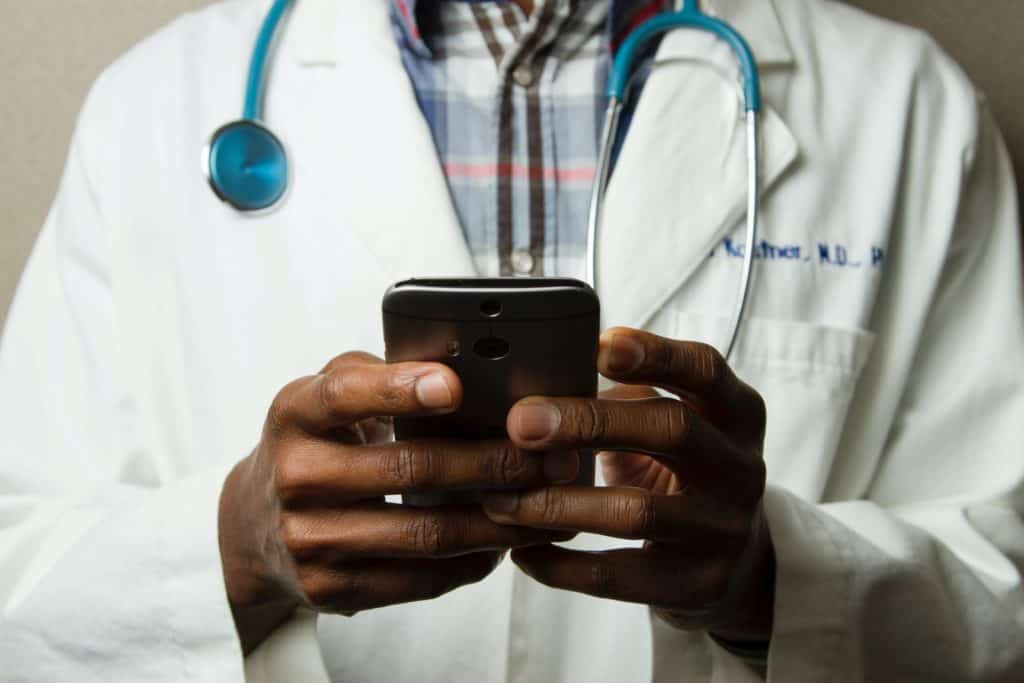With telemedicine, providers and patients use technologies like live videoconference, phone calls, emails, text message and online health portals to communicate with each other. The COVID-19 pandemic has led to an increased use of telemedicine, demonstrating the benefits of remote care. It has also amplified disparities in healthcare.
With the tools of telemedicine, doctors can perform the following functions remotely:
- Screen patients who may have symptoms of COVID-19
- Provide primary care, specialty care and mental and behavioral health services
- Monitor and support patients with chronic conditions
- Provide case management for patients who lack access to care
Health systems like UC San Francisco, Kaiser Permanente and Cleveland Clinic have seen dramatic increases in online medical visits in the past few months, and virtual healthcare interactions are expected to reach 1 billion by the end of 2020. Providers have worked to quickly implement telemedicine into their practices in the past few months as it is critical for the health of healthcare workers, patients and the general public.
Telemedicine decreases the volume of patients seeking in-person care in facilities, which in turn helps to prevent the spread of COVID-19. It also reduces strain on healthcare systems by limiting the use of resources like personal protective equipment. By reducing risk of exposure to the virus, increasing convenience and expanding accessibility to care, telemedicine has the potential to benefit the health of the patient while improving health equity. However, the recent expansion of these digital services may actually be contributing to an increase in health disparities among disadvantaged populations.
Multiple barriers create a “digital divide” that disproportionately affects vulnerable populations who lack access to technology, digital literacy or reliable internet coverage. These populations include rural residents, racial minorities, older adults and people with low incomes, limited health literacy or limited English proficiency. Many of these groups intersect, creating even greater and more prevalent barriers to remote care.
Poor internet coverage, which is associated with fewer telemedicine visits, is a significant issue in rural areas. The Harvard School of Public Health found that 21% of rural Americans reported that access to high-speed internet is a problem for them or their family. Limited access to broadband internet is also a concern for remote tribal communities, which can further exacerbate the severe health disparities that American Indians already face.
Racial minorities and older adults also face barriers to telemedicine access. Over 30% of Hispanic or Black children do not have a computer at home. Older, less educated and Black and Hispanic individuals tend to have lower digital literacy. Older adults, who are most likely to need the chronic disease management that telemedicine can provide, are also more likely to face barriers in accessing it. In 2019, 27% of U.S. adults aged 65 and older reported they did not use the internet, and only 55%-60% of adults over age 65 owned a smartphone or had broadband access in their homes.
Income also acts as a barrier to telemedicine services. Low-income households are much less likely to own computers than wealthier households, and low-income individuals have lower rates of home broadband access, smartphone ownership, Internet use and digital literacy. About 1 in 8 Americans live in poverty, so these factors affect a large portion of the country. Altogether, this digital divide greatly affects multiple disadvantaged groups who already face health disparities and are at a higher risk of serious illness if infected with coronavirus. Those who could benefit the most from this expansion of telemedicine are therefore the least likely to have access to it.
As telemedicine grows and changes during the pandemic, the healthcare industry must take this opportunity to set new precedents and implement new structures that facilitate health equity moving forward. These actions include:
- Governments and community developers investing in improving telecommunications infrastructure, internet access and computer ownership for underserved areas such as rural and low-income communities.
- Health systems identifying high-risk patients with low digital literacy and providing outreach in the form of tip sheets, conducting a test visit or walking the patient through the set-up process over the phone. The Department of Education should also reinstate the Community Technology Centers (CTC) program to provide residents from low-income and rural communities with access to technology and digital literacy training.
- Healthcare systems eliminating structural barriers such as requiring enrollment in a patient portal in order to access telemedicine services, a lack of protocol for including interpreters in telemedicine visits and technical or logistical challenges that occur when scheduling video visits.
- Healthcare IT companies creating low-cost, culturally competent, easy-to-use and widely accessible telemedicine tools that all types of patients can use.
- Healthcare IT companies hiring more women and people of color. Increased representation of minority groups in the health tech industry can enable companies to effectively serve underrepresented communities.
- Clinicians advocating for policy changes at the local, state and federal levels to expand low-cost or free broadband internet access, fund the development of digital infrastructure for health centers that have limited experience with telemedicine and pursue systemic change in Medicare and Medicaid coverage of all telemedicine services.
Marjanna Smith is a special initiatives intern at NCRC.
Photo by National Cancer Institute on Unsplash



